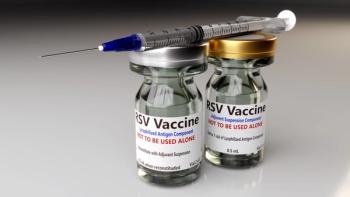
Chronic Fibrosing ILD With Progressive Phenotype: Economic Burden
Practical perspectives on the economic burden of chronic fibrosing interstitial lung disease with progressive phenotype.
Transcript
Neil B. Minkoff, MD: Now we’ve explored the ramifications of the clinical disease, how people get diagnosed, and the barriers they’re in with the overall burden of disease to the healthcare system. As the person here with the most background on the payer side, from a payer point of view we think about the economic burden of chronic fibrosis ILD with progressive phenotype. In terms of it being reasonably rare and not something that we were spending a lot of time concentrating on the new therapies and the pipeline this shifted payers to at least have it on their radar screen. It’s very difficult as payers, and this goes back to the discussion I was teeing up before, for us to see exactly what the costs are because we’re not seeing the patients with an easy ICD 9 or 10 codes, or the ability to go in. It’s reasonably easy to find patients who have been started on a therapy that’s specific. Other than that where we see the costs mostly are the direct costs of healthcare resource utilization, CAT scans which are mildly expensive, PFTs that aren’t, lots of ER and clinic visits. We see the barriers, it’s a long journey before patients get diagnosed and get onto therapy. The economic burden that we are concerned about is either the amount of time we’re spending with patients who are on inhalers that are working for them, bouncing around the system from clinician to clinician, multiple ER visits for shortness of breath or related symptoms before somebody nails down the diagnosis and starts therapy. We are starting to pay attention to the disease and the progressive phenotype and looking for those comorbidities.
Some of you have you made the observation before that a lot of these patients have multifactorial disease, with a lot of different components to it, hormonal logic rheumatologic, and autoimmune. And trying to pair back the layers of those comorbidities and see if there are ways that we can steer patients to earlier diagnoses. But, I am unaware of any payer that’s been able to do so effectively through analysis of claims data. Mostly due to the barriers of the rare nature of it, trying to sift through chest CTs to find patterns to identify patients, when we’re dealing purely with coding and billing data. The economic burden as the disease progresses to tends to be more around chronic care. In some ways it is simplified when the patient actually gets a diagnosis. Now we know what’s going on with the patient and they’re in a care and treatment plan, as you have been discussing and sharing with us. The economic burden goes back to the employer. Where they’re looking to see whether or not our therapies and our ability to do disease management or to work with the clinicians around this. And to tailor therapies to the right patient population, balance the costs that they’re baring, in terms of their cost of the premiums that they’re covering.
Newsletter
Stay ahead of policy, cost, and value—subscribe to AJMC for expert insights at the intersection of clinical care and health economics.





























































